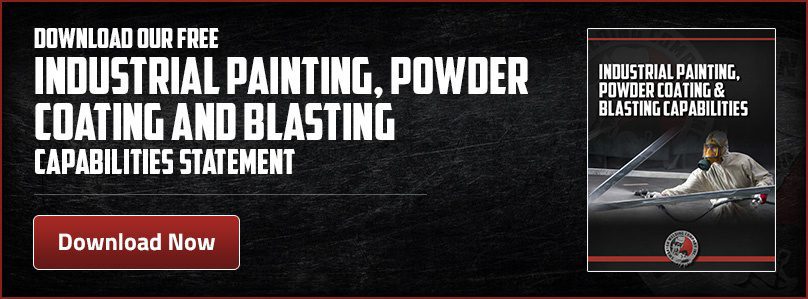Sandblasting and Painting vs. Painting Alone
The visual aesthetics and protective properties of a proper finishing for your metal fabrication project cannot be overvalued. As such finding the right paint, as well as the right method to apply it, is essential. You want your paint to look great, but you also want something that will withstand the battery and exposure your final product will encounter. That is where an examination and comparison of sandblasting and painting versus painting alone techniques can be helpful.

Sandblasting and Painting vs Painting Alone
Traditional wet painting involves a solvent-based or water-based paint being sprayed onto a surface.The blast and paint technique is more intensive and can be broken down into 3 steps: pretreatment, application, and curing.
Beginning with blasting, the surface of the part is cleaned (grease, previous coatings, dust or rust is removed) through abrasion. The etching and scratching in the surface prepares the surface so that the paint bonds and sticks with it. Without this step, paint chips more easily. Sandblasting strips the oxidation off of the steel. Leaving it exposed and not properly finished in the wrong environment will cause rust to form quickly. The part is allowed to dry in a safe atmosphere before the next step.
After pretreatment, a zinc based primer and the powder are electrically applied with a electrostatic gun (reminiscent of a hairdryer). The electrostatic gun aids in the even distribution and speed of the application. This also has the double benefit of preventing over-spraying since excess paint is repelled.
Finally, the part is taken to an oven where it is cured and the primer gels. After the primer has been heated and gelled the final coat is applied. The finish is customizable and it is applied similarly to the primer. The part is heated once more until it has been cured. The result is a vibrant, high-quality finish.
The Advantages of Sandblasting and Painting
With the differences between the two painting methods out of the way, it is time to explain why the sandblasting and painting method has been recognized as superior to wet painting. The main benefits of the former are durability and longevity. Blast and paint does more than provide a pretty paint job. It is much more cost-effective and offers amazing protection against environmental hazards that simple wet paint does not:
- Corrosion: At only 3 mils, a single coat has similar corrosion protection to that of 3 coats of paint applied at the exact same thickness. Whereas wet paint is generally used for indoor applications, powder coated parts have excellent weatherability.
- Economical: As a solid product, wasted spray can be reclaimed and reused. Overspray is less likely and the transfer efficiency of blast and paint is between 60 and 70 percent (compare the much lower 30 to 35 percent transfer rate of wet paint).
- Production Benefits: Blast and paint gets parts ready to go faster than wet paint. As soon as a chassis is cooled it is ready to be handled or machined further.There is less downtime as powder coating lines require less supervision.
- Chemical Resistance: Have you ever accidentally spilled brake fluid on a car’s paint? If so, then you’ve seen the damage done. With blast and paint the finish is chemical resistant. Just wipe up the mess and the paint is left unscathed.
The blast and paint technique is superior in many ways to the simple application of wet paint through more traditional methods. Reduced costs, resistance and smooth finishes are the advantages of powder coating, advantages that wet paint can’t match. To learn more about blast and paint contact Swanton Welding today.

